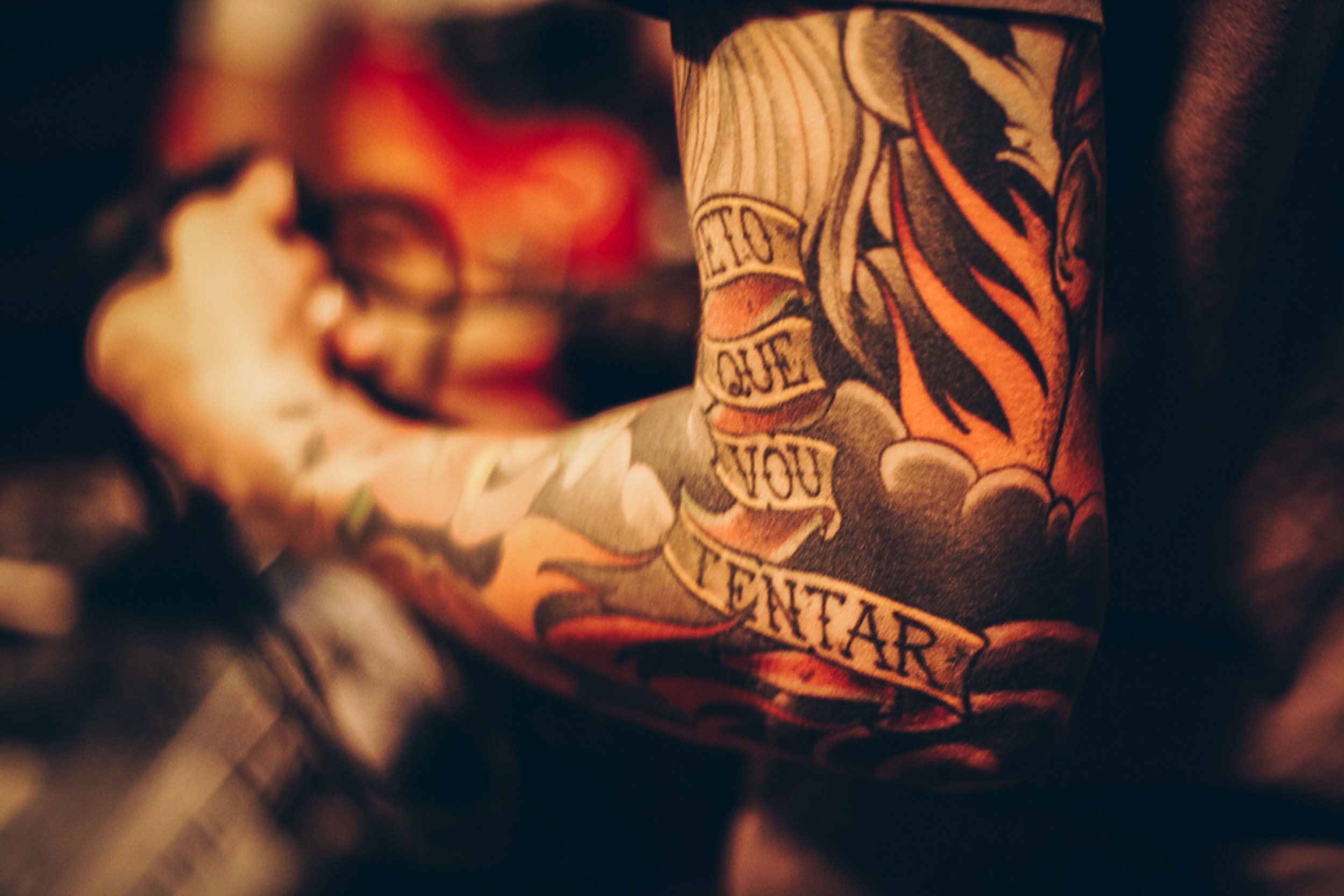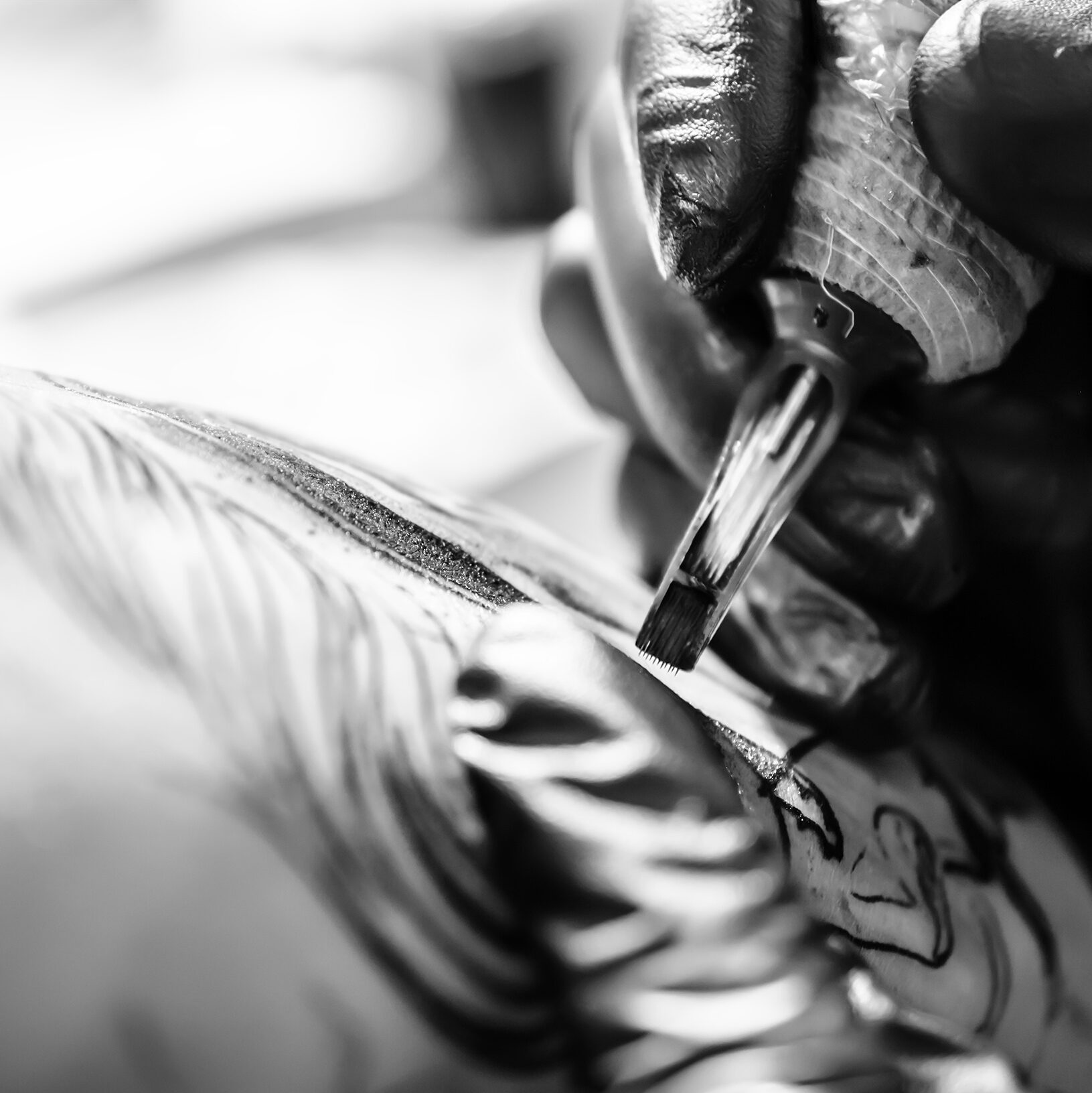A more common occurrence that it seems, infected ink is more of a nuisance than it is a genuine cause for alarm. If not properly disinfected and bandaged, you could be walking out of a tattoo shop with a growing rash. There are many ways by which a tattoo can become infected. In this article, we’ll be tackling these troublesome causes and how to treat your infected piece.
Causes for Infected Tattoos
Consider that a new tattoo is essentially an open wound. When exposed to germs and bacteria, it can easily become infected. Among the leading causes of infection are:
- Unsterilized Equipment
To prevent the spread of infection, tools in a tattoo parlor must always be properly cleaned and sterilized. If needles aren’t disinfected, any bacteria that are already present may be transferred into your body. Before you begin your session, ask your artist about the process of properly decontaminating their equipment.
- Neglected Aftercare
While an untrained artist may sometimes be the cause of an infected tattoo, bad aftercare habits can be just as much to blame. If you aren’t adhering to the aftercare instructions provided by a professional, something as trivial as forgetting to wash your hands can lead to a nasty infection.
Symptoms of an Infected Tattoo
If your tattoo is infected, you’re likely to experience the following mild to moderate symptoms:
- Itching on a growing rash
- Bleeding and blistering around scabs
- Pain and heat around the tattoo site
Over time, these symptoms may develop into:
- Pus-filled pimples becoming boils
- Red lines around the area
- Continuous bleeding
- Swollen lymph nodes
- High temperatures and shaking
Common Types of Tattoo Infections
Among the most common types of infections caused by poorly-applied tattoos are:
- Staphylococcal Bacteria
A frequent cause of tattoo infections, this type of bacteria can easily be treated using antibiotics prescribed by your doctor.
- Methicillin-Resistant Staphylococcus Aureus
A type of bacteria that is resistant to antibiotics, your doctor may be able to prescribe an alternative treatment to eliminate it.
- Nontuberculous Mycobacteria
Caused by contaminated ink, this infection may appear as patches or bumps around the tattoo site.
How to Treat an Infected Tattoo
If you’re noticing symptoms early on, it can be easy to treat an infected tattoo from the onset without having to seek further treatment. The best way to combat infection is through prevention. Perform the following cleansing steps at least 2 to 3 times a day until your tattoo is fully healed.
- Remove the Bandage Appropriately
A brand-new tattoo will likely be bandaged after your session. Always properly dispose of old bandages after wearing them.
- Wash Your Hands
The key to avoiding most infections is through regular hand-washing. Keep your hands spotless to avoid transferring any bacteria into the tattooed area.
- Wash the Area
When washing the tattooed area, use a gentle soap that is mild and unscented. Avoid using rough cloths and water that is too hot or too cold.
- Thoroughly Dry the Area
After washing the area, use a gentle microfiber cloth or paper towel to pat-dry it.
- Use a Moisturizing Lotion
Unless otherwise instructed, use an unscented lotion to keep the area moisturized. You can purchase tattoo-specific lotions to enhance the healing process and reduce the occurrence of scabbing or blistering.
Conclusion
Though there are dozens of ways a tattoo can become infected, it’s often difficult to pinpoint the source. Whatever the case, always practice strict aftercare as instructed by your artist or doctor.
For an award-winning piece that will surely turn heads, book an appointment at Lucky Deville Tattoo Co. Prided as one of the best tattoo shops in Buffalo NY, we provide ink enthusiasts with custom-designed body art that lasts a lifetime.



